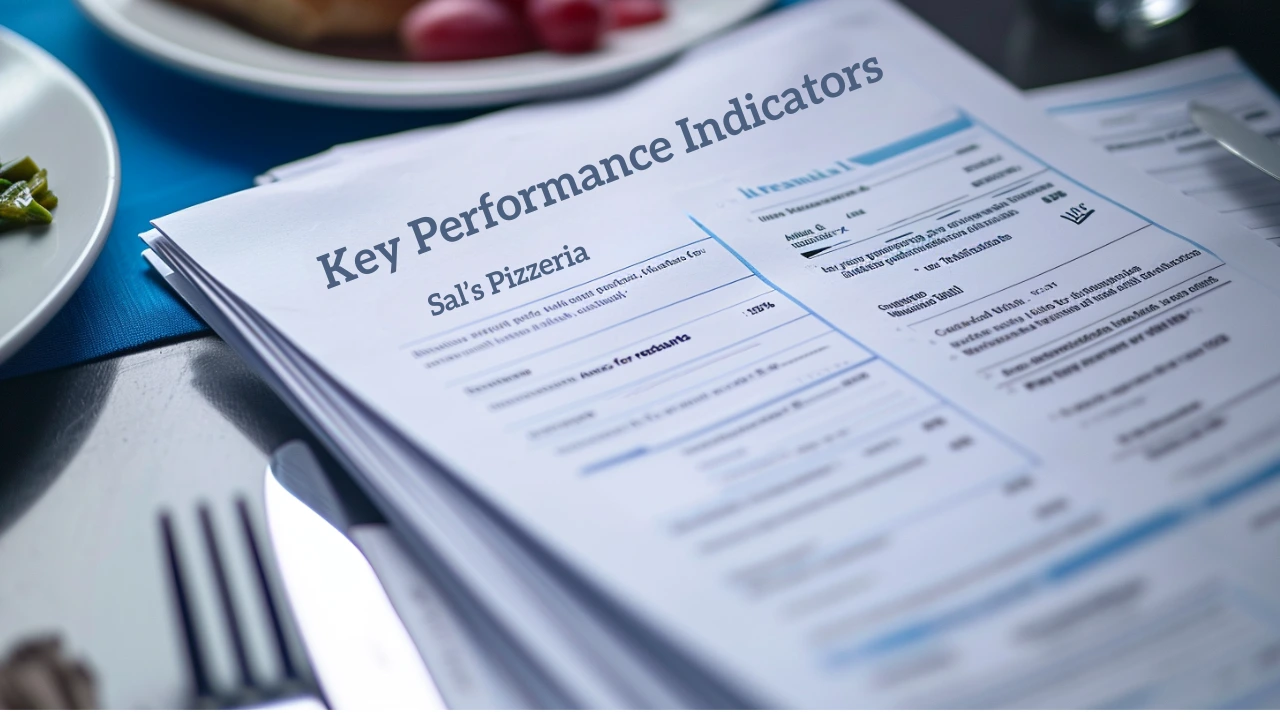A Deep Dive Into Canadian Restaurant Accounting

Straightening restaurant numbers can be challenging even for the most professional and experienced Canadian restaurant owners. There are so many things to remember, such as your income statement and income tax, including getting your financial statements right to ensure you’re keeping up with your legal obligations.
Though restaurant record keeping can be challenging, the success of your business depends on it. Many Canadian restaurant owners hire accounting and bookkeeping services to stay on top and make finance-driven decisions, ensuring legal and financial aspects are handled professionally.
Regardless if you opt for the same route or decide to do it yourself, this restaurant accounting guide will give you the ins and outs of the process by discussing the best accounting methods and addressing other vital details you should know.
What is restaurant accounting?
Restaurant accounting is the method of using various record-keeping and bookkeeping services and processes to manage transactions and financial records of a restaurant business.
A restaurant business uses such services to manage operating expenses, handle payroll, track revenue, and ensure the efficient, legal, and accurate management of all financial statements and transactions.
Restaurant record-keeping empowers restaurant owners to comply with the latest regulations and avoid paying hefty fines and trouble with the law.
When it comes to handling your accounting needs, you have several options on your hands as a restaurant owner:
- Outsourcing;
- Doing it yourself;
- Hiring a professional to use restaurant accounting software.
Now, let’s delve deeper into the ins and outs of all three options.
Pros and Cons of Outsourcing Restaurant Accounting
Pros:
- Access to seasoned bookkeeping experts
- It can be more affordable than hiring an in-house professional
- It helps save time, effort, and resources you can use elsewhere
- It helps ensure compliance with regulatory requirements
- It allows you to stay ahead of restaurant taxation
- Outsourcing accounting helps you reduce human error and improve the accuracy of your financial statements.
Cons:
- Outsourcing can expose you to unexpected expenses and hidden fees
- You may not find an available accounting professional at tax time
- Outsourcing accounting to accountants from other countries may result in inaccurate or non-compliant tax returns and business reports
Pros and Cons of Accounting Yourself

Pros:
- Restaurant owners can save resources by not paying for record-keeping services, an essential consideration when managing finances in-house,
- You can get ahead of the numbers faster
- Business owners get a 360-degree of their financial position
- You are in control of all operating expenses and your restaurant’s financial performance
- You can do your tax planning when it suits you
Cons:
- Handling your restaurant’s finances yourself may cause you to lose money on missed operational expenses
- You can expose your restaurant business to compliance issues
- You can endanger your restaurant’s financial health by making data entry errors
Pros and Cons of Hiring a Professional to Use Restaurant Accounting Software

Pros:
- The best way to optimize your financial transactions and manage cash flows
- You can integrate the accounting software tool with your POS system to get ahead of your restaurant’s bookkeeping
- Automate tedious financial management processes
- Upgrade your cash management
- Real-time tracking of operational expenses
- Cloud-based technology ensures high-end data security
- Top-grade payroll management
Cons:
- You could miss important deadlines due to service disruptions to your restaurant’s accounting system
- High installation and maintenance costs
- Every software is prone to system crashes
Restaurant Accounting Methods
Let’s discuss the best accounting methods to help you decide which one to choose.
There are four primary methods restaurants can opt for to crunch their numbers:
- Single-Entry Accounting – Helps restaurants track their total costs, operational expenses, income statements, liabilities, cash flows, and assets by recording each transaction one single time
- Double-Entry Accounting – Records all financial transactions taking place in your restaurant twice as corresponding credits and debits
- Cash Accounting – Keeps a record of all your restaurant expenses and revenue, but only when a financial transaction takes place
- Accrual Accounting – Allows restaurant businesses to keep a record of all their earnings and incurred expenses
Let’s delve deeper into all four accounting methods.
Single-Entry vs Double-Entry Accounting
Single-entry accounting helps businesses list income and expenses in a single row. Restaurant owners can display income using positive values or the green colour, and address all their expenses using negative values or the red colour.
Double-entry accounting involves assigning a corresponding opposite data entry for every entry connected to a given account. This accounting method allows restaurant business owners to track the value of all their assets by balancing out the total of all the different credit and debit data entries.
In a single-entry vs double-entry accounting method case, the first is more practical for restaurant owners with low transaction volumes. However, better options exist for getting ahead of your inventory management needs. Double-entry accounting is more suitable for companies that deal with large-scale money transfers.
Cash vs Accrual Accounting

Cash accounting is an ideal accounting method for small businesses like restaurants as it helps restaurant owners streamline their cash flow processes. With this accounting system, you record expenses when you make payments and track your income when you receive payments.
Cash accounting is the perfect method if you need a clear picture of your restaurant’s financial health. However, be mindful when implementing the cash accounting system, as it doesn’t consider any outstanding invoices or debts.
Because of that, it may not be the most effective tax planning method for restaurants with irregular cash flow or lower transaction volumes. On the other hand, many restaurants opt for accrual accounting because it allows them to track the total costs coming and going from their venue.
This method helps restaurants record a transaction when a sale is made, even if the guest still needs to pay. Similarly, the same process keeps track of all expenses when they are incurred, even if you still need to pay your bills.
Restaurant Financial Statements and Reports
Let’s delve deeper into restaurant financial statements and reports to outline the essentials regarding KPIs, processes, and reports you should consider when running a restaurant, especially if you’re a foreign entrepreneur navigating the Canadian business landscape.
Chart of Accounts
The chart of accounts is a financial record of high-level transactions like equity, revenue, cost of goods sold (COGS), liabilities, assets, and expenses.
It helps restaurant businesses categorize payments and expenses by the resources they spend and receive. These include laundry, utilities, marketing promotions, staff wages, food items, beverage costs, etc.
Balance Sheet
A balance sheet helps you track your equity (net worth), liabilities (loans and vendor bills), and restaurant assets like straight cash, inventory, and equipment. A balance sheet is critical to understanding the financial performance of your restaurant.
It shows you your restaurant’s financial standing with the current value of your business, outstanding debts, and how much money you currently have. It also helps you reduce operating expenses and find the best ways to cover debts.
Profit and Loss (P&L) Income Statement
Your income statement is a reflection of your restaurant costs and sales. A restaurant income statement helps you get a 360-degree view of your profits, business costs, labour costs, food items, sales volume, etc.
Also called a profit and loss or statement of operations, your income statement helps you understand your overall profitability health to make more informed financial decisions on increasing revenue and cutting costs.
Cash Flow Statement

A cash flow statement helps restaurants understand their operating cash flows.
This statement shows you a few essential financial points, such as:
- How much money your restaurant business holds at the moment;
- Whether your business is capable of generating enough resources for expansion;
- Whether you should look into external financing options.
Revenue Report
As the name suggests, this report gives insights into your total expected revenue for a determined period. It also shows how you spend earned income on food and beverage items and the expected revenue you will earn in the coming time.
A revenue report includes the following items:
- Your total revenue;
- Average number of tables and receipts;
- Average revenue per customer (per table).
Accounts Payable
Accounts payable is an essential part of your restaurant’s bookkeeping process that addresses inventory and invoice payments to suppliers and vendors.
It helps you pay your due bills on time without error to maintain healthy relationships with your suppliers. In addition, it also helps you ensure your inventory shipments arrive according to schedule.
Payroll
The payroll report helps restaurant businesses track billable hours and distribute staff’s paychecks. It also helps them record overtime, sick time, vacation, bonuses, deductions, tips, etc.
The payroll report is essential to filing tax returns and paying your staff accurately. It also helps you manage deductions and get a scope on various restaurant-related taxes.
Key Performance Indicators (KPIs) for Restaurants

KPIs determine the financial health of restaurants. Here are the key performance indicators you should consider.
Prime Costs
Prime costs encompass the total expenses required to keep your restaurant business running. It accounts for your total restaurant earnings, including those that cover your menu (beverage and food items) and your staff.
Here’s how to calculate your prime costs:
total labour cost + cost of goods sold (COGS)= prime costs
Prime costs give you insights into the best ways to boost profits, increase operational efficiencies, and reduce costs.
COGS
COGS refers to the cost of goods sold. This restaurant performance indicator shows you how competitive your pricing is. It also helps you ascertain the effectiveness of your inventory management strategy.
Put simply, the COGS KPI helps you calculate the actual cost of your menu items, including your ROI reaped from food and beverage sales.
Here’s how to calculate your COGS:
beginning prices of your food and beverage items + purchases – ending inventory = COGS
Breakeven Point
This KPI indicates how much profit a business needs to cover its expenses.
Here’s how to calculate it:
total fixed costs ÷ ( (total sales – total variable costs) / total sales) = breakeven point
The breakeven point KPI is an excellent tool for helping restaurants set realistic sales objectives.
Total Sales per Head (TSPH)
This KPI helps business owners get ahead of various metrics, such as the average time restaurant guests spend on breakfast, lunch, and dinner.
Here’s the formula for calculating the TSPH KPI:
total sales / number of guests = TSPH
TSHP is essential when setting upselling and cross-selling goals.
Net Profit Margin
Profit refers to the leftover earnings after you’ve covered all your operating expenses, including utilities, equipment, rent, labour, and COGS. This KPI allows you to calculate your true restaurant earnings.
Here’s how to calculate it:
(gross revenue – operating costs) / gross sales = net profit margin
Restaurant Accounting Cycles and Tax Reporting Periods
Canadian restaurants have three restaurant accounting cycles to choose from – weekly, monthly, and annual. Weekly works best for most restaurant businesses.
The monthly approach may work for you, but you should consider the fact that each month has a varying number of days. In addition, each month begins and ends on a different day, which could make your accounting efforts more difficult.
Within a 4-4-5 accounting cycle, you have three periods:
- The first financial period – the first four weeks;
- The second period – the following four weeks;
- The third period – the final five weeks.
This approach helps you consolidate and streamline all your data to ensure your payroll, revenue, expenses, and all other items are consistent. We recommend a weekly accounting cycle as it’s the most consistent method of providing transparent restaurant accounting.
Canada’s tax reporting deadline is April 30 for every fiscal year.
The Importance of Getting Your Restaurant Accounting Right
Getting your restaurant numbers right allows you to avoid common mistakes that might result in downtime for your business.
These mistakes include:
- Hiring an accountant outside the hospitality industry – Restaurants have unique tax structures, financial reports, and KPIs that accountants from other industries may find confusing or irrelevant. Look for restaurant-specific professional services to crunch your numbers.
- Bookkeeping errors – A wrong bookkeeping data entry may result in incorrect financial reports, missed tax return deadlines, and more;
- Opting for the wrong accounting period – Opting for a monthly period to do your numbers may not be the most viable option for your business. Instead, we recommend going with the 4-4-5 weekly period.
- Monitoring wrong KPIs – Including wrong KPIs in your calculations can incur irreparable damage to your restaurant business. Consider hiring professional record-keeping services to avoid any unnecessary risks.
- Using an ineffective method to handle your calculations – Since there’s no one-size-fits-all method to get your numbers straight, we recommend consulting with reputable accounting services to determine the best method for your business.
Top-grade record-keeping benefits your business efforts in various ways:
- Keeping track of your finances allows you to improve your financial performance;
- Tracking your cash flow helps you improve your cash flow management skills;
- You can enhance restaurant profitability by understanding where your revenue goes and which business areas bring the most profit;
- Accurate financial record bookkeeping helps you ensure tax compliance and avoid hefty fines and potential penalties.
Getting your restaurant numbers right is essential to ensuring your business thrives.
FAQ
What is the difference between restaurant bookkeeping and accounting?
You should keep accounting and bookkeeping distinct. A restaurant’s bookkeeping refers to tracking, recording, and organizing financial data of your restaurant, whereas accounting turns that data into actionable insights for investors and restaurant owners.
What is restaurant accounting software?
Restaurant accounting software is a tool that helps manage the financial operations of a restaurant, including tracking transactions, generating reports, managing inventory, and monitoring account balances. It assists in organizing financial data and provides valuable insights into a restaurant’s performance
What services do corporate accountants provide?
Corporate accountants are crucial in managing a company’s financials and ensuring compliance with Canadian financial regulations. They offer bookkeeping, year-end financials, and corporate tax filing services. Working with a dedicated corporate accountant can provide valuable insights and help save money for businesses of all sizes.
What is the general ledger of a restaurant?
The general ledger of a restaurant refers to the master chart of accounts that hold records of all financial transactions in your venue.
What are the period costs in a restaurant?
Period costs in a restaurant refer to expenses that aren’t directly connected to the inventory. These expenses include marketing costs, general and administrative expenses, etc.
Resources
https://www.business.com/categories/restaurant-accounting-software/







